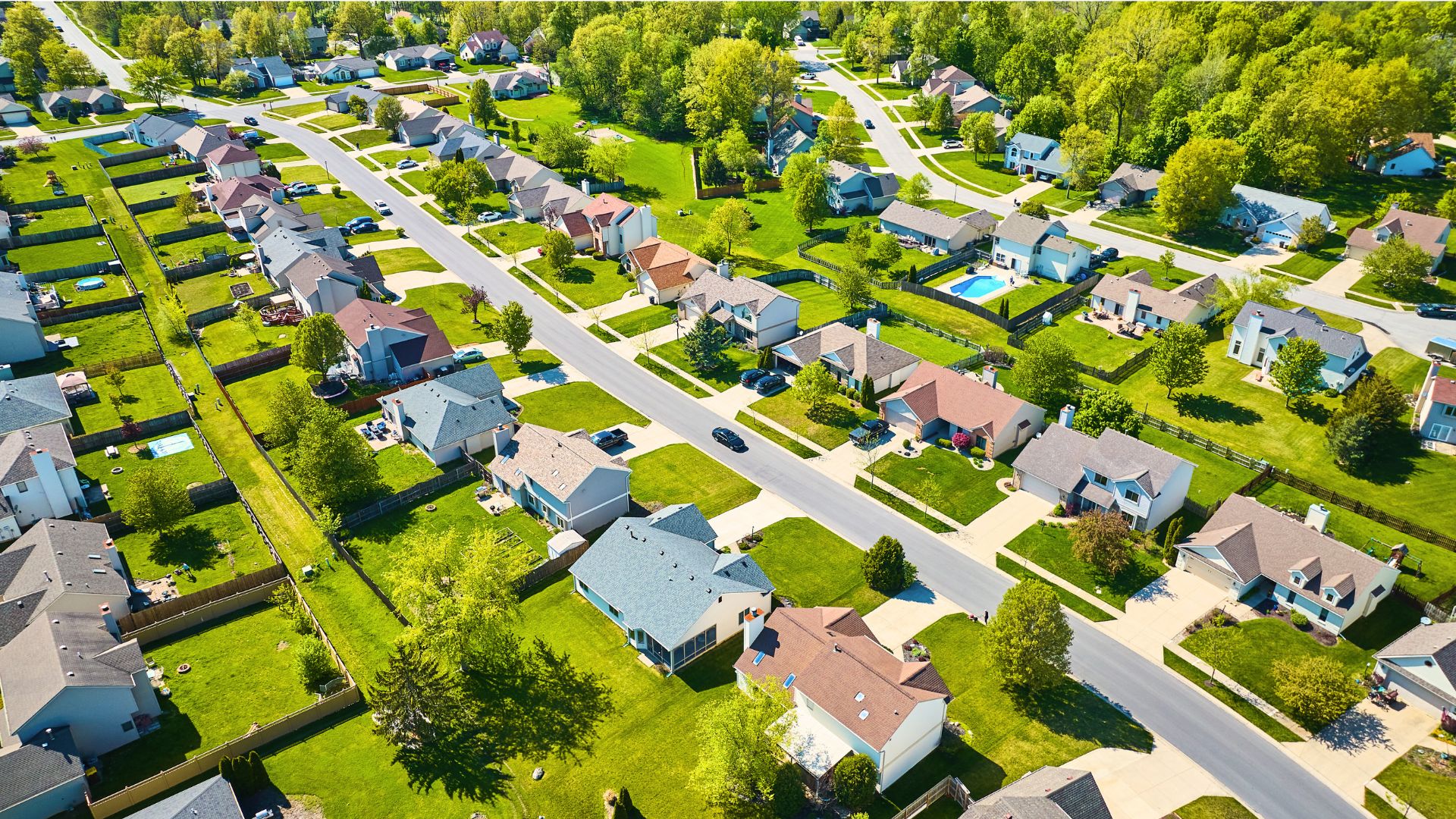In some households, “tax” is a four-letter word. Regardless of a homeowner’s opinion on taxes, it’s important to know the history of property tax, where the money goes, and how it may help the community you live in. While Americans face many types of taxes, like income tax and sales tax, this blog will focus explicitly on property taxes.
Property taxes have been a thing in the United States since before the country was founded in the Colonial Era, and they existed throughout the world even before that. In fact, the oldest property tax record was found in the ancient city-state of Lagash dating back to 3,000 BC. Fast-forward to the present-day United States: property taxes are levied by state and local government entities, and go toward funding things such as schools, police, and local infrastructure. Property tax is based on the assessed value of a property, which means some cities accrue more in property tax than others.
Where Do Property Taxes Go?
In 2020, about 72% of local tax revenue came from property taxes in the United States. A significant portion of property taxes support public education. Property taxes also go toward regional infrastructure, public services like the fire and police departments, parks and recreation, and other local government operations.
A (Very) Brief History of Property Tax
Benjamin Franklin said this about taxes, “Our new Constitution is now established, and has an appearance that promises permanency; but in this world, nothing can be said to be certain, except death and taxes.” Indeed, taxes have always been a hot topic in the United States. “No taxation without representation,” was a primary driver for the Revolutionary War. People sometimes mistake this to mean the United States fought for no taxes. That was not the intent. The founders wanted the U.S. government to collect taxes and spend them their own people. This is as opposed to sending taxes to the British government for causes across the pond.
Even before a single amendment was added to the United States Constitution, it always granted the government the power to collect taxes. This power falls under Article I, Section 8, Clause 1. By 1796, 14 out of the 15 colonies had land taxes in place. Today, every state has some form of property tax. Wyoming, however, is currently in the process of trying to be the first state to eliminate property taxes.
Effective Property Tax Rate
Talking about property tax can feel a little like opening Pandora’s Box. Every city has a system for collecting and spending property taxes. This also means every city has a different effective property tax rate. The average effective property tax rate in California is 0.71%, whereas in Texas it is 1.6%. An “effective property tax” is a conglomeration of mill levies raised on a property by each local entity. A mill levy is the percentage of property tax a local body will receive.
For example, a city hall may collect a mill levy of .01%, a library may collect .03%, a fire station .01%, and so on. These add up to an effective property tax rate.
Property Tax Assessment
A mill levy is multiplied by the assessed value of a property to determine what tax is owed. If the assessed value of a home is $25,000 and the fire department’s mill levy is 0.01%, a person would owe $250 to the fire department. An assessment is the amount the government decides your property is worth. This can be different from the “market value” (though not always) of a home, which is what a person is willing to pay to purchase the property.
Some Property Tax Examples
NYC has certain “classes” of properties for property tax purposes. For example, a single-family home falls under Class 1. A 10-unit residential building falls under Class 2, etc. These classes limit how much an assessment can increase each year. This means a brownstone in Manhattan can have a market value of $3 million, but only has an assessment of $300,000. To calculate property tax owed, the mill levies are multiplied by $300,000, not $3 million.
In California, Proposition 13, passed in 1978, capped property taxes at 1% of a property’s assessed value. It also limits annual increases in assessed value to 2% or the inflation rate—whichever is lower. In Texas, the government bases its assessment on the market value of the property as of January 1st of the previous year. Texas has one of the highest property tax rates in the country at 1.6%. This can also be partly attributed to the fact that Texas has no income tax—but more on that later.
Assessment Increases and Appeals
As a homeowner, it’s important to note that if your home’s property value increases (by adding a bathroom or a pool, for example), your property tax assessment may also increase. Many municipalities have an appeals process if someone believes their property has been assessed incorrectly.
High vs. Low Property Tax Considerations
Paying a higher or lower property tax can sometimes come down to preference. Take a look at the famous city zip code 90210. In Beverly Hills, the assessed value of a home can be around $10 million. With California’s average effective tax rate of 1%, someone may pay $100,000 yearly in taxes.
In a low property tax state like Alabama, if a person’s home is assessed at $100,000, it’s possible to pay only $325 a year in property taxes. This could make a case for moving to Alabama, right?? Well… not always. If someone loves hunting, wide open spaces and the outdoors, then a place like Alabama might be perfect for them. However, if someone is seeking the benefits that property taxes typically provide in major metropolitan areas—such as newer school technology, public transportation and diverse entertainment options—then a rural city in Alabama may not be the ideal place to relocate.
Furthermore, if someone finds themselves in need of fire or emergency services in certain rural parts of Alabama, those services may take up to 45 minutes to reach a person. A fire or emergency in Beverly Hills? The average wait time for those services is around 3 minutes or less.
Why Pay Property Taxes If I Don’t Use Services or Have School-Aged Kids?
Most community members are likely reaping the benefits of property taxes. Even something as simple as pulling out of the driveway and into a public road is putting those property tax dollars to work. Garbage collection, public schools, water infrastructure, police, and fire service are all possible because of property taxes.
But what about the services you contribute to through property taxes that you think you don’t use? Think again. Though you may not have children of your own attending the local school, the indirect impacts are enormous. It’s been suggested that, an educated populace leads to less crime and publicly funded after-school programs help keep vulnerable youth off the streets—things the entire community will benefit from.
According to these studies, the more a community invests in education, the greater the return on investment in the future. These are the invisible benefits of property taxes that some homeowners don’t know or think about.
Tax Transparency and Going Forward
Property taxes should be transparent, and homeowners should know exactly where their tax dollars go. In most areas, local treasurer websites provide detailed breakdowns of property taxes, which help residents understand how their contributions support their communities. While there have been cases of mismanagement or misuse of public funds, the solution lies in demanding accountability and efficiency. Without property taxes, essential services like emergency response, road maintenance, public schools, sanitation, and public safety would disappear or be severely limited.
Some regions, particularly in parts of the western U.S. such as Wyoming, Montana and Oklahoma, operate with lower tax structures. In these areas, residents may take on more responsibilities, such as managing their waste or relying on volunteer emergency services. While this model works for some, most Americans benefit from and prefer access to comprehensive local services funded by property taxes. Understanding how property taxes work and advocating for their fair and effective use is key to maintaining a strong and livable community.
Ready to explore a new community, and see those property tax dollars at work? Connect with a local REMAX agent and browse listings.






